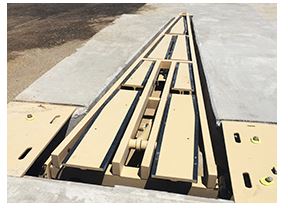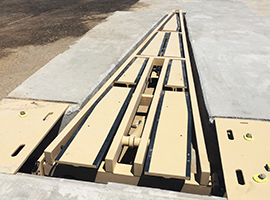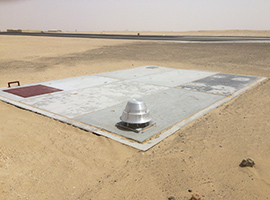We answer your current and future needs to the highest of standards
Our mission is to safely arrest fighter aircrafts experiencing trouble at aborted take-off or emergency landing. The system installation at the end of the runway is often the last resort for a pilot and aircraft in distress and we take our mission very seriously.
Our well-tested and technology-leading products are based on a proven design in combination with the latest material technologies. By uniquely combining systems and modules from technological, economic, and flight safety aspects, depending on the type of operating aircraft, we answer your current needs as well as prepare for the needs of tomorrow.
What information is important for us to guide you to the highest value for your investment in runway safety?
Operating aircraft? – one type or a range of aircraft
Aircraft weight range? – from empty weight to max take-off weight
Aircraft equipped with tailhook? – if yes, the arresting method will be by cable
– if no, the arresting method will be a net barrier
Available runout? – the available stopping distance behind the arresting system
We do performance simulations based on your input for different energy absorbers (brakes) and configurations. The hook strength is a limiting factor in hook cable configurations. The simulation results are presented as a performance graph with engagement speed vs. aircraft weight. For net barriers, we perform a compatibility study for each aircraft type.
There are many other factors to take into consideration when selecting the best technical, economic, and safety solution, or call it “the optimal compromise”. Is it a main airbase or a remote runway defining the level of operation? Is it based on experience considered to be operational arresting systems or pure emergency? A visiting aircraft from other air forces? Preparation for future upgrades due to incoming platforms? Combined military- and civil operation? Civil aviation FAA/ICAO requirements and recommendations? Access to electrical power? Weather and environmental conditions?
These factors, in combination with the simulated performance, will result in recommendations and issues to consider when selecting the energy absorbers system (capacity, flexibility, maintenance), tape rewind system (diesel or electrical), installation above grade (close or set-back), in bunker (pit), retractable hook cable (heaters), remote control ATC (fiber or radio), net barrier stanchions (direction, reclined), arresting net (service life)…etc.
Below ICAO adaption examples showing graded and roll-over protected stanchion foundations and energy absorber bunker from the outside.








